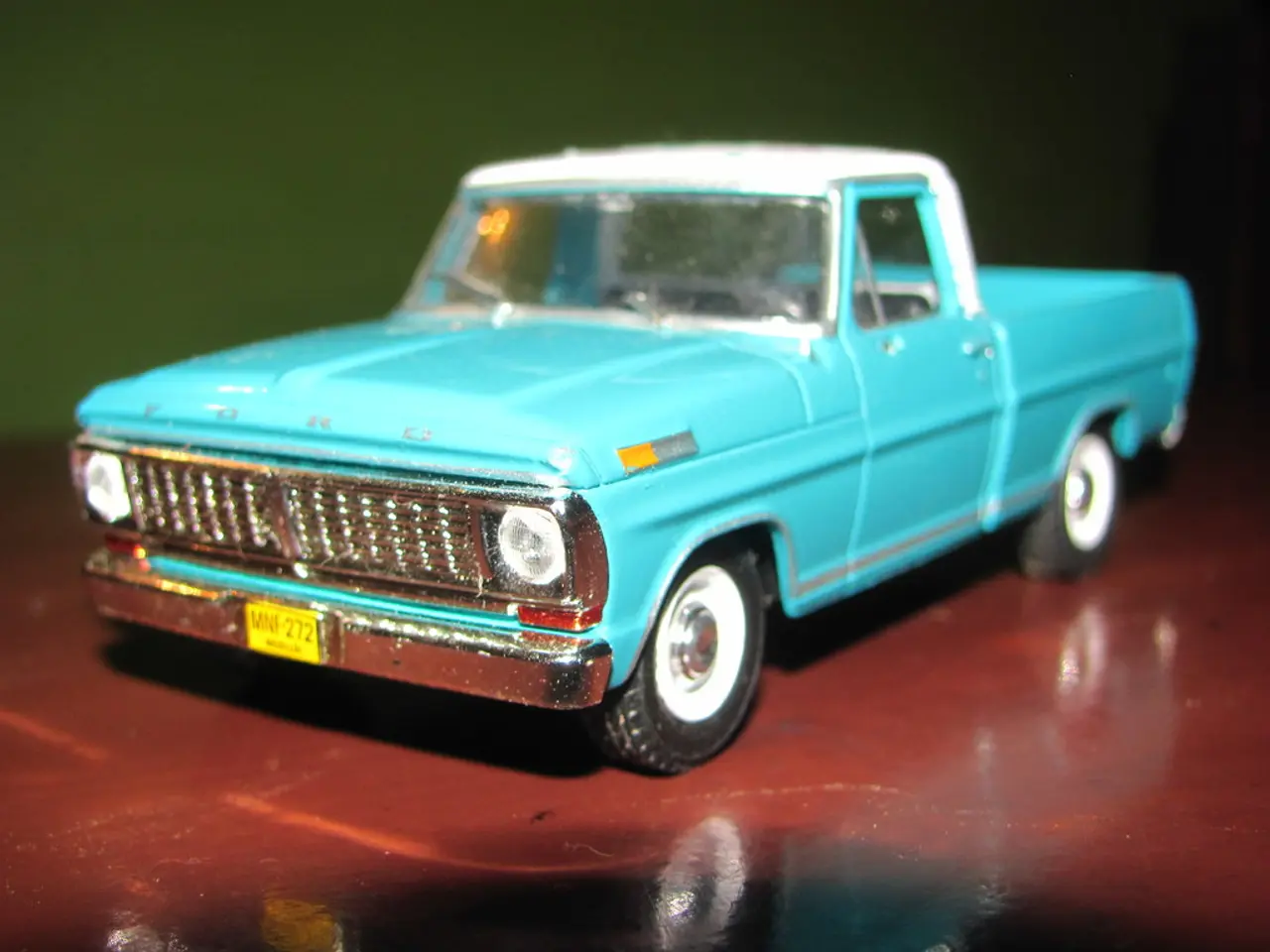Chronicle of the Morris Minor: Its Origins and Evolution
The Morris Minor, a British icon, made its debut at the 1948 Earl's Court Motor Show, replacing the Morris Eight Series E. Initially, the 1948 Morris Minor was equipped with a 918cc sidevalve engine, a carryover from the Morris Eight. This engine, while reliable, was underpowered, resulting in modest performance despite advancements in suspensions and steering.
However, the Morris Minor was not meant to remain in this state. In 1952, the introduction of the Series II Morris Minor marked a significant turning point. British Motor Corporation (BMC) swapped out the sidevalve engine for the Austin A-Series 803cc overhead valve engine, a more modern unit that offered better efficiency and power. This change transformed the car's performance, making it a more competitive lightweight vehicle in its class.
The evolution continued in 1956 with the Minor 1000, where BMC enlarged the A-Series engine to 948cc, increasing output to around 37 bhp. This upgrade improved acceleration and top speed, making the Minor more practical for wider use.
In 1962, a further upgrade introduced a 1098cc A-Series engine, boosting power substantially to 48 bhp at 5100 rpm. This marked a significant performance improvement, providing better speed and drivability.
Throughout its career, the Morris Minor was developed to offer various models, including two-door saloon, convertible (Tourer), estate (Traveller), van, and pick-up. The Morris Minor vans and pick-ups were not exclusively sold to the Post Office, and the famous rubber front wings were replaced with conventional steel items as early as 1955.
Despite the Post Office demanding the use of the 803cc engine for their vans until 1964, only 52,745 Minor vans and pick-ups were sold to the Post Office. The Morris Minor enjoyed an extremely long run, with the saloon bowing out in 1970, the Traveller in 1971, and commercial variants remaining on sale through to 1972.
Beyond factory changes, Morris Minors are also noted as favourites for hot rod modification, where aftermarket engine swaps and performance boosting are common to increase power much beyond original specifications. The Morris Minor, from its modest beginnings in 1948, effectively replaced the Morris Eight Series E and became the first British car to sell more than a million units. Its evolution, largely enabled by BMC’s access to Austin’s A-Series engines, continually enhanced the Morris Minor’s performance while retaining its renowned handling and economy, transforming it from a slow, basic economy car to a more competitive lightweight vehicle in its class.
In the later stages of its evolution, the Morris Minor's performance was bolstered by the incorporation of advanced engines from the Austin A-Series, such as the 948cc and 1098cc units in 1956 and 1962 respectively. These engine swaps not only increased power but also significantly improved speed and drivability.
Moreover, the Morris Minor was reimagined to cater to diverse industries, including finance, with the production of Morris Minor vans and pick-ups. These commercial variants were not exclusively sold to the Post Office and their sales extended beyond the Post Office's demand for the 803cc engine.




